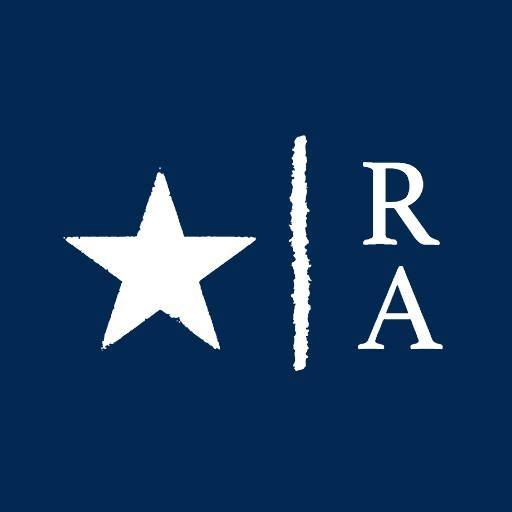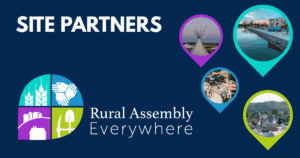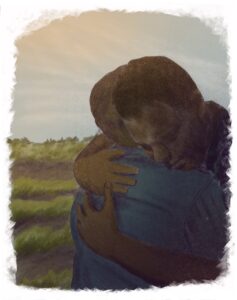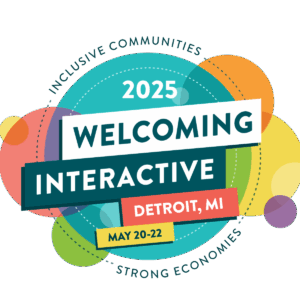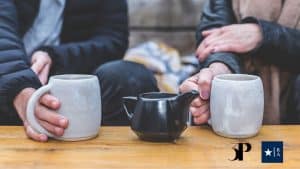
Drawing Resilience: Caryl Hale
Illustrations and interview by Nhatt Nichols
Caryl Hale is the executive director of the Norton Regional Health Foundation and amember of the Norton Arts Council in Norton, Kansas. Hale brings her experience in farming and foodsystems with her to both roles, helping to create rural health policies that center art and food production.
Nhatt:
You have an interesting path, working with arts funding, healthcare, farming, and art.
Caryl:
If you want to see something change or grow, you have to do it yourself in a rural community. We did a local food assessment, which led to this work with the correctional facility. To give you some context, our county is about 5500 people, and the correctional facility census right now is a little over 800. So roughly about 15% of our population is housed at the correctional facility. They are also the largest employer. When we started having these conversations about our local food system, we wanted to make sure we were engaging the largest employer in our community.
They are their own little world, they make and grow a lot of their own food. The warden, Hazel Peterson, has been open to partnerships and ways to collaborate. They’re really trying to work on their employee retention rates and making it a place that people have pride in working at, and also help those that are housed there to walk out with skills that they can use outside of the facility.
Nhatt:
Is there opportunities for artists in your community to work with incarcerated people?
Caryl:
That’s what we’re working on with the Arts Council. The initial project is a dual mural project. We’re working with [Dave Loewenstein], a community based muralist out of Lawrence. The way he works is he holds several community meetings [to see] who are we as a community. Our focus was to work with what they call ‘populations of focus’. I spent a lot of time trying to figure out what that meant for our community because we don’t have a diverse population. One thing that stuck out was we don’t work with our correctional facility. It’s its own self-sustaining environment, and yet, it has a huge impact on our community.
We wanted to build that connection with this mural project. Community members were able to share what they were familiar with, like the pumpkin program, where they go out and purchase pumpkins or they buy baked goods from the correctional facility, or they see work crews helping to set up our homegrown carnival at our county fair every year.
There were also questions about that connection and what that looks like from the inside. Then, besides talking through things, he asked the community to draw images of things that they think connect us. So he focused a lot on birds because birds can go between places pretty freely. They did a lot of talking about different birds that they see inside the facility, and birds that were familiar to where they were from because some of the guys were from out of state.
Now, we’re at this point where a design has been pulled together and the muralist was working with a group of guys at the facility and a group from the community to paint. One mural is at the correctional facility in the chow hall, and the companion mural is at what’s called the Haven, which is housing for family members visiting their loved ones at the facility. It’s right in town and very visible.
That whole project has started this relationship with a warden that has led to a USDA grant submission. We started talking about their growing capabilities out of the facility, and she said they have two and a half acres in production, a 100-tree apple orchard, and produce 55,000 pounds of fruit produce a year.
The USDA grant encourages more gardening and growing at the prison to feed local people. Specifically, it’s institution to institution, so from the Correctional Facility to the hospital, which is how the Health Foundation is involved.
When we were doing the initial food assessment, we interviewed anyone involved in an institutional food program, which included the schools, the hospital, some of our retirement community, and a drug and alcohol rehab program. All of them have similar issues: we want fresh produce, but price, contracts, and access are issues. We just don’t have the producers.
The feasibility study was set up to look at institutions and what their needs and price points are. And looking at the existing correctional facilities system, how it works in terms of education. Are these guys learning best practices, what systems are in place and what needs to be boosted up, and if they were to scale up, what equipment, education, and skill sets are needed? There’s a lot of pieces we’re trying to put together to make a close-knit system.
Get this and other rural content in your inbox with the Rural Assembly newsletter.
